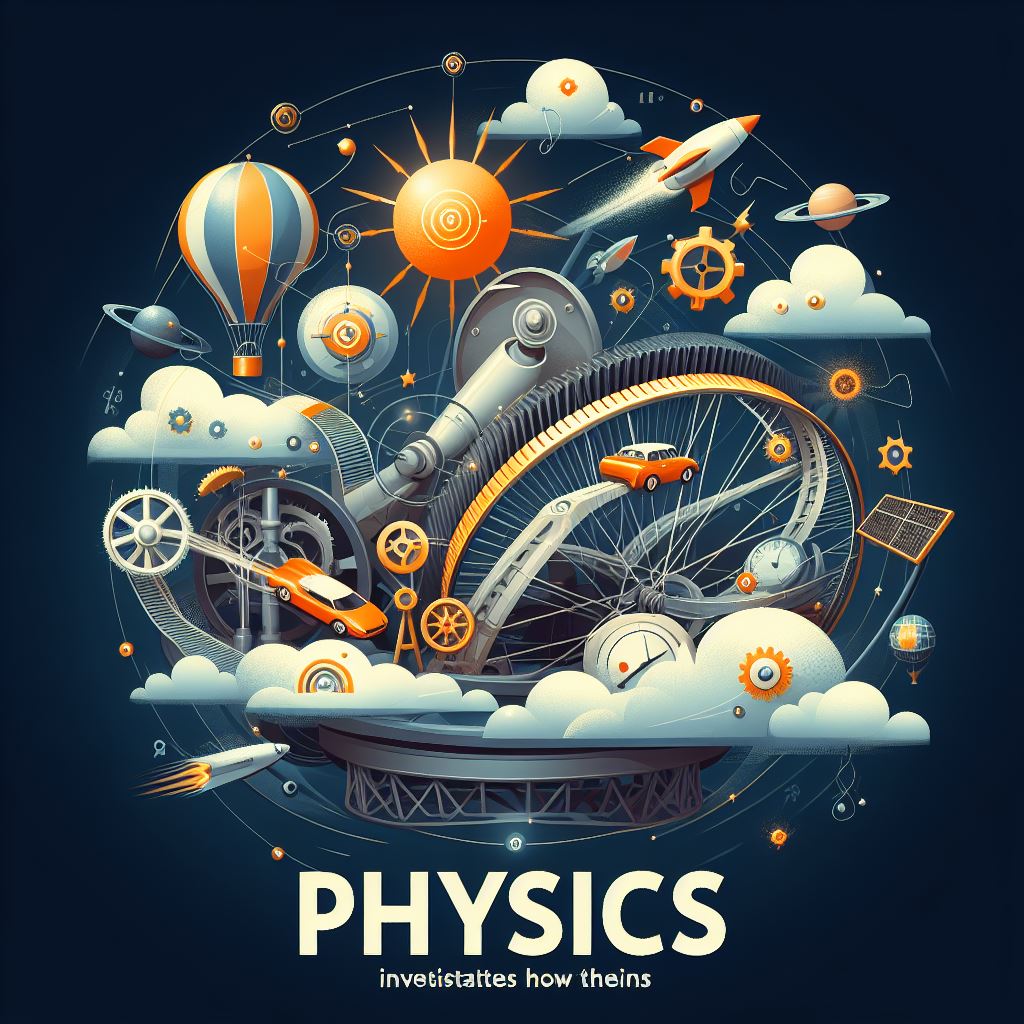Basic Physics 101: A Crash Course – Chapter 1

In simpler terms, physics is the study of everything around us, from the tiniest particles to the vast expanse of the universe. It’s like a giant detective story, trying to figure out the rules that govern everything from the way a leaf falls to the way the stars shine.
Scientists use theories, watch how things happen in nature, and use math to explain how stuff works. Physics covers a big range, from the tiny particles that make up everything to the way entire galaxies move. It’s like having a super guidebook that helps us understand the fundamental nature of everything in the cosmos.
Here are some key ideas in physics:
- Motion: Physics investigates how things move, how they change speed and direction, and what causes these changes.
- Forces: Forces are pushes and pulls that can cause objects to move, change shape, or even break.
- Energy: Energy is the ability to do work. It comes in many forms, like light, heat, and electricity, and can be transformed from one form to another.
- Matter: Matter is everything that takes up space and has mass. It’s made up of tiny particles called atoms, and these atoms can combine to form different materials.
- Gravity: Gravity is the force that pulls objects towards each other. It’s why we don’t float away into space, and it’s what keeps the planets in orbit around the sun.
These are just a few of the many things that physics helps us understand. It’s a vast and fascinating subject that can be both challenging and rewarding to study.
1. Motion and Kinematics
- Motion: Anything that changes its position over time is in motion. Kinematics is the study of motion without considering the causes of that motion.
- Distance, displacement, and speed: Distance is the total length traveled, while displacement is the straight-line distance between two points. Speed is the rate of change of distance and is measured in meters per second (m/s).
- Velocity and acceleration: Velocity is the rate of change of displacement and has both magnitude and direction. Acceleration is the rate of change of velocity and tells us how quickly the speed and/or direction of an object is changing.
2. Forces and Newton’s Laws
- Force: A force is a push or pull that can change the motion of an object. The SI unit of force is the newton (N).
- Newton’s first law: An object at rest stays at rest, and an object in motion stays in motion with constant velocity unless acted upon by an unbalanced force.
- Newton’s second law: The net force acting on an object is directly proportional to the mass of the object and its acceleration.
- Newton’s third law: For every action, there is an equal and opposite reaction.
3. Energy and Work
- Energy: Energy is the ability to do work. It comes in various forms, such as kinetic energy (energy of motion), potential energy (stored energy), thermal energy (heat), and radiant energy (light).
- Work: Work is done when a force causes an object to move. The amount of work done is equal to the force applied times the distance moved in the direction of the force.
- Power: Power is the rate of doing work. It is measured in watts (W) and is equal to work divided by time.
4. Gravity and Motion
- Gravity: Gravity is a fundamental force that attracts objects towards each other. It depends on the masses of the objects and the distance between them.
- Free fall: All objects fall at the same acceleration due to gravity in a vacuum, regardless of their mass.
- Weight: weight is the force of gravity on an object. It is equal to the mass of the object times the acceleration due to gravity.
5. Introduction to Quantum Physics
- Quantum physics: Quantum physics studies the behavior of matter and energy at the atomic and subatomic levels. It is a fascinating and challenging field that has revolutionized our understanding of the universe.
- Quantization: At the quantum level, things come in discrete packets or quanta. For example, energy and light can only exist in specific amounts.
- Wave-particle duality: Particles, like electrons, can also exhibit wave-like behavior. This duality is a fundamental principle of quantum physics.














